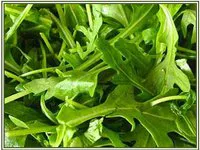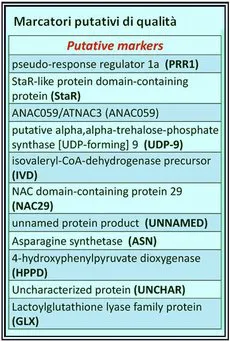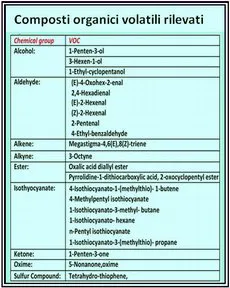 Leaf senescence is a degenerative physiological process that inevitably affects the quality and the shelf-life of fresh-cut leafy vegetables.
Leaf senescence is a degenerative physiological process that inevitably affects the quality and the shelf-life of fresh-cut leafy vegetables.The improper practices occurring at harvest and during postharvest phases may influence significantly the quality of final product accelerating the leaf senescence. Moreover, the storage conditions and the potential abiotic stresses may also influence vegetable aroma by altering the VOCs (Volatile Organic Compounds) production.
Within European Project QUAFETY on quality and safety of fresh-cut produce, the scientists at University of Milan (Italy) and of Cardiff (UK) have isolated molecular markers to evaluate the quality of fresh-cut rocket (Diplotaxis tenuifolia L.) and to profile VOCs composition of fresh-cut rocket after harvest by testing different storage conditions. The markers isolation has been obtained by molecular sequencing technology (NGS).
Rocket plants were grown in soilless systems in controlled growth chambers, the storage conditions compared were:
- Fresh-cut leaves stored at dark at 4°C
- Fresh-cut leaves stored at dark at 20°C
- Wounded Fresh-cut leaves stored at dark at 20°C
VOCs screening showed that differences were not clear between leaves stored at dark at 4 or 20°C during the first 24 hours of storage, while evident differences were detected between wounded leaves and those stored at dark at 4°C.
 |  Click here to enlarge the table above. |
Source: Cavaiuolo M., Cocetta G., Spadafora N., Muller C., Rogers H., Ferrante A., "Senescence associated markers to evaluate the quality in postharvest rocket fresh-cut leaves", poster showed at 6th Workshop on Leaf Senescence, 14-18 October 2013, INRA, Versailles, France.
